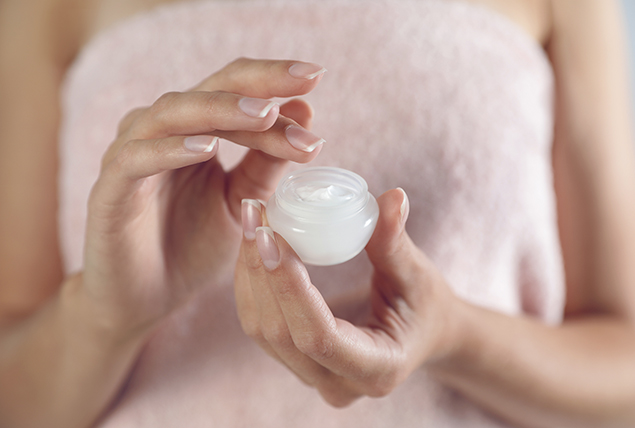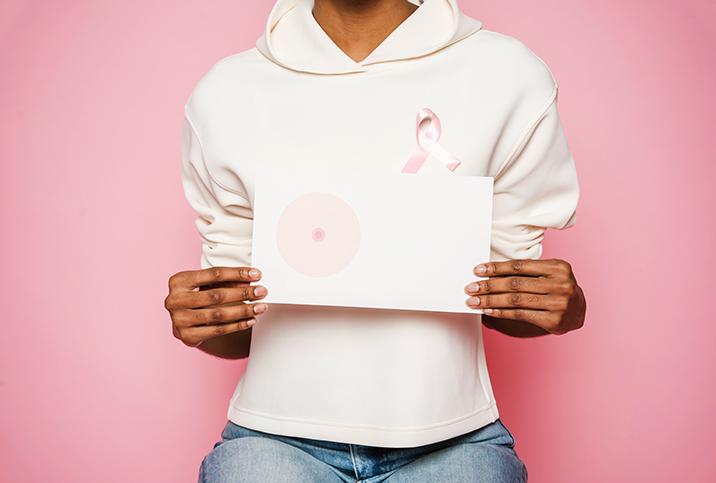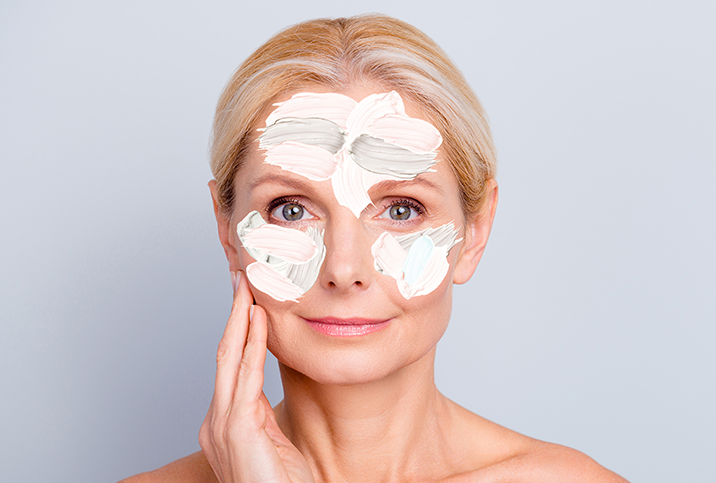Does Herpes Cause Scars?

Most people with herpes don't have visible symptoms, but the ones who do typically develop sores or marks around their lips, genitals or buttocks, which usually heal within a week or two.
If and when those sores break open, herpes can cause scarring.
As of now herpes is incurable, and eliminating outbreaks and the possibly resulting scars is not an option at the moment, however, there are methods to minimize risk. And if you have scars already, at-home remedies and dermatological treatments can make them less conspicuous.
What is herpes and how does it spread?
About 67 percent of people younger than age 50 worldwide have herpes simplex virus type 1 (HSV-1), the virus that usually causes oral herpes, according to the World Health Organization (WHO). Although herpes simplex virus type 2 (HSV-2), the virus typically responsible for genital herpes, is less common, it remains prevalent worldwide and in the United States. Both types of the virus can cause infections in either the mouth, lips, genitals or buttocks, and people can develop HSV-1 on their genitals or HSV-2 on the mouth from engaging in oral sex with infected people.
'The best way to prevent scarring is to prevent outbreaks from occurring at all. While there's no cure for herpes [...] [but] it is possible to diminish the risk with medications and lifestyle changes.'
In 2018, there were approximately 572,000 new HSV-2 infections in the U.S., and about 11.9 percent of people ages 14 to 49 have HSV-2, according to the Centers for Disease Control and Prevention (CDC). Most people acquire HSV-1 in childhood, the CDC reports.
Many people with herpes are unaware of their infection, and about 87.4 percent of 14- to 49-year-olds with HSV-2 have never been diagnosed, in part, because a mild case of herpes can produce few or no symptoms. In addition to fever, swollen lymph nodes, headache and body aches, the characteristic symptoms are skin blisters or cold sores, which can resemble pimples or ingrown hairs in a mild outbreak.
The herpes virus is contagious and spreads through direct physical contact with an infected person, such as skin-to-skin contact, kissing, and anal, oral and vaginal sex. A person doesn't have to have symptoms to transmit the virus, and most people contract it from someone who doesn't have any sores.
Usually, if symptoms occur, they arise within two days to three weeks following exposure, with the average time being four days, according to Geeta Yadav, M.D., a dermatologist and the medical director and founder of Facet Dermatology in Toronto.
Sores usually appear on or around the mouth, genitals, anus, buttocks, hips or thighs, according to the American Academy of Dermatology Association.
Can you prevent herpes cold sores?
The best way to prevent scarring is to prevent outbreaks from occurring at all. While there's no cure for herpes and no surefire way to prevent outbreaks, it is possible to diminish the risk with medications and lifestyle changes, according to Yadav and Raman Madan, M.D., a dermatologist at Northwell Health Physician Partners Dermatology at Huntington in New York.
"Often, factors that trigger an inflammatory response in the body can trigger a herpes flare-up," Yadav said. "The most common are stress and illness, but others can include fatigue, sun exposure and hormonal shifts, such as menstruation."
Reducing stress, getting enough sleep, avoiding the sun and eating a healthy, anti-inflammatory diet can all help to diminish the risk of an outbreak, according to Madan and Yadav.
Daily medications such as acyclovir, famciclovir and valacyclovir can help keep the virus in check, too, Yadav said.
"These prescription treatments not only help prevent outbreaks and shorten their life spans [of the symptoms] but can help reduce the risk of herpes transmissions," she added.
Why scarring occurs
Cold sores don't typically leave scars unless they burst open, as they can break if picked, squeezed, scratched or rubbed against clothing, according to Madan and Yadav. This can cause scabbing or infection, either of which will likely lead to a scar.
"Sores don't always burst open, so this may not occur, but you can avoid this by treating sores gently," Yadav said.
Sores can change the skin in other ways, too, both Madan and Yadav explained. Sometimes, the skin around the sore becomes red and scaly or lighter in complexion. Unusual lines may develop and the skin may feel thicker than before the outbreak.
"Sores can also leave behind discoloration known as PIH, or post-inflammatory hyperpigmentation," Yadav noted. "Even when sores don't burst, their inflammation can cause the body to respond by producing excess melanin production as it heals. This is more common in certain skin types, especially those with deeper complexions. PIH is hard to prevent, but reducing inflammation as much as possible can go a long way. Cold compresses, keeping your hands off the sores and seeking treatment early will help minimize irritation and, thus, reduce the inflammatory response."
How to prevent scarring
Keeping the area clean and protected is key. The dermatologists offered some specific tips:
- Apply cold compresses to reduce inflammation, itching and pain.
- Avoid picking, rubbing or scratching, as doing so can cause the sore to break. These behaviors can introduce bacteria to the area, increasing the likelihood of infection, interfering with healing and contributing to scarring.
- Gently wash the affected area with mild soap and warm water twice a day, being careful not to rub the sores. Pat dry afterward.
- Moisturize with a petroleum-based moisturizer, as dry skin is more prone to breakage. Avoid lotions with dyes or perfumes that may irritate the skin.
- Use over-the-counter cold sore creams to accelerate healing.
- Wear loose clothing. Tight clothing can rub against the sores, causing them to break. You can also protect the area with a large bandage under your clothes.
How to treat existing scars
If you already have scars, Yadav recommended protecting them from the sun and moisturizing regularly with a silicone-based topical product, which can help them gradually fade. Other at-home options include:
- Aloe vera. A few studies suggest aloe vera may facilitate skin rejuvenation and diminish hyperpigmentation in scarring. Apply aloe vera gel for 30 minutes directly to the skin, then wash it off with warm water. Repeat daily.
- Coconut oil. Some people claim coconut oil can reduce scarring, but studies on its effectiveness have produced mixed results. To try this method, heat the oil and allow it to cool before massaging it gently into the scar and surrounding area. Do this once or twice per day.
- Vitamin E. Vitamin E is another method that's backed by anecdotal evidence, with little support from scientific studies. You can purchase a vitamin E cream or vitamin capsules. If you opt for the latter, pierce them to squeeze out the liquid. Gently massage the liquid or cream into the scar for three to five minutes per day.
Even in the best circumstances, Yadav noted scars can take up to two years to fade and may never completely disappear, regardless of the healing process. For quicker, more effective results, it's best to see a professional.
"It is generally best not to take measures into your own hands when it comes to treating herpes scars," she said. "Herpes flare-ups are easily triggered by many aesthetic treatments used to help treat scars, including chemical peels and light therapy. Lasers may be the right choice for some patients, but your provider will likely recommend you take an antiviral medication before, during and after treatment to help stave off a flare-up.
"Microneedling is one of the gentler choices for fading herpes scars and is safe for all skin tones," she added. "I highly recommend you see an experienced provider for a customized treatment plan and to be prescribed preventative antivirals for the day of your treatment."
Madan echoed Yadav's comments about microneedling having few drawbacks aside from being the "least aggressive" treatment.
"Dermabrasion and laser are similar because, essentially, they are taking away the top layer of the skin and stimulating collagen production," he said. "Results with laser and dermabrasion are pretty good. It would be reasonable to expect the scar to heal and maybe just leave a little textural change."
How long it takes for these treatments to work and how effective they are depends on factors including the treatment itself, frequency of the treatment and the scar's severity.
"Professional-strength treatments work more quickly, but an experienced provider should be consulted so they can minimize your risk of further outbreaks or side effects from the treatments themselves," Yadav explained. "Chemical peels, depending on their strength as well as the severity of the scar, could work quickly, and this is also true of lasers. Microdermabrasion will likely take at least four to six treatments to see results."
As for microneedling, Madan said it typically takes about four sessions to see a 50 percent improvement.
"All skin is different, and every scar is unique," Yadav said. "In-office treatments will always be more powerful and effective than at-home solutions, but you cannot expect perfection from any option. You will likely see some improvement, but 100 percent recovery may not be realistic."


















